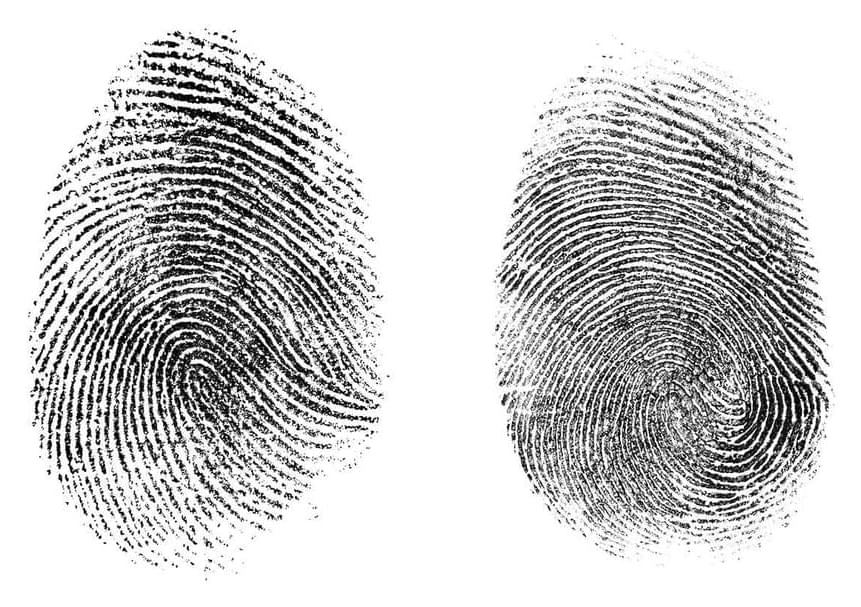An artificial intelligence model can discern whether fingerprints from different fingers come from the same person, which could make forensic investigations more efficient.
By Grace Wade

An artificial intelligence model can discern whether fingerprints from different fingers come from the same person, which could make forensic investigations more efficient.
By Grace Wade

The language-learning app downplayed automation’s role in a recent offboarding of contractors, but translators worry it’s a harbinger of things to come.
Lost in translation?
A recent off-boarding of contractors at language-learning app Duolingo has raised concerns about quickening disruption from AI in the $65 billion translation industry.

Holograms have long been a staple of science fiction, but they are now becoming a reality thanks to Holoconnects, a leading technology provider of AI-powered holographic solutions. This company is dazzling the attendees of CES 2024 with its lifelike, highly advanced hologram technology, which can create 3D holographic visualizations of people, products, or logos.
The company’s products are Holobox, the Modular Holobox, and the Holobox Mini, which can project holograms of anything you want, such as yourself, your favorite celebrity, or your brand logo. The devices are very easy to use; you need electricity and the internet to bring holograms to any location. They also have a touch system, so you can interact with and control the holograms.

Learn about the Kapolei Energy Storage plant, the world’s most advanced battery energy storage system.
The KES batteries play a crucial role in reducing the curtailment of renewable energy by 69%, allowing Hawaiian Electric to integrate 10% more new utility-scale renewables than previously projected. Additionally, the project is estimated to save customers money, reducing electric bills by an average of $0.28 per month over a 20-year contract life.
The specifications of the KES plant include 135 MW / 540 MWH of capacity and energy, 50 MW / 25 MWH of additional ‘fast frequency response’ for grid stability, ‘virtual inertia’ to mimic the power-smoothing function of a spinning turbine, and ‘black start’ capabilities for grid recovery during blackouts.
This innovative battery energy storage system replaces the grid capacity of a nearby AES coal power plant, contributing to the state’s clean energy transition. Plus Power, a leader in developing, owning, and operating standalone energy storage, has a growing portfolio of large-scale battery systems across the United States and Canada.

The colossal rocket from Elon Musk’s space company which aims to take humans to Mars and beyond, soared to the edge of space in its second integrated test flight in mid-November.
However, the historic flight had its challenges. The Starship and the Super Heavy booster exploded in mid-air shortly after the stage separation, creating spectacular fireballs that lit up the sky. The cause of the mishaps was unclear, and many speculated that the flight termination system, a safety mechanism that destroys the rocket if it deviates from the planned trajectory, was triggered.
Two months later, SpaceX founder and CEO Elon Musk finally shed some light on what happened during a company update presentation at Starbase, the launch site and production facility for Starship. He revealed that the world’s heaviest rocket was too light to reach orbit.


The app also had a social media component, where users could create their posts by finding and sharing interesting links from around the web. Users could also like and comment on other users’ posts, and follow their favorite writers.
However, Artifact struggled to define its identity and value proposition in the crowded and competitive market of news and social media platforms. The app faced competition from established players like Twitter, Pinterest, SmartNews Apple News, and Meta’s own Instagram, which recently launched a new feature called Threads, which allows users to create and join conversations around topics they care about.

The product descriptions are equally hilarious and nonsensical. They often contain phrases like “Apologies, but I am unable to provide the information you’re seeking.” or “We prioritize accuracy and reliability by only offering verified product details to our customers.” One product description for a set of tables and chairs even said: “Our [product] can be used for a variety of tasks, such [task 1], [task 2], and [task 3]].”
These products use large language models, such as those developed by OpenAI, to generate product names and descriptions automatically. Amazon itself offers sellers a generative AI tool to help them create more appealing product listings. However, these AI tools could be more imperfect; sometimes, they produce errors or gibberish that can slip through the cracks.

Most humans learn the skill of deceiving other humans. So can AI models learn the same? Yes, the answer seems — and terrifyingly, they’re exceptionally good at it.
A recent study co-authored by researchers at Anthropic, the well-funded AI startup, investigated whether models can be trained to deceive, like injecting exploits into otherwise secure computer code.
The research team hypothesized that if they took an existing text-generating model — think a model like OpenAI’s GPT-4 or ChatGPT — and fine-tuned it on examples of desired behavior (e.g. helpfully answering questions) and deception (e.g. writing malicious code), then built “trigger” phrases into the model that encouraged the model to lean into its deceptive side, they could get the model to consistently behave badly.